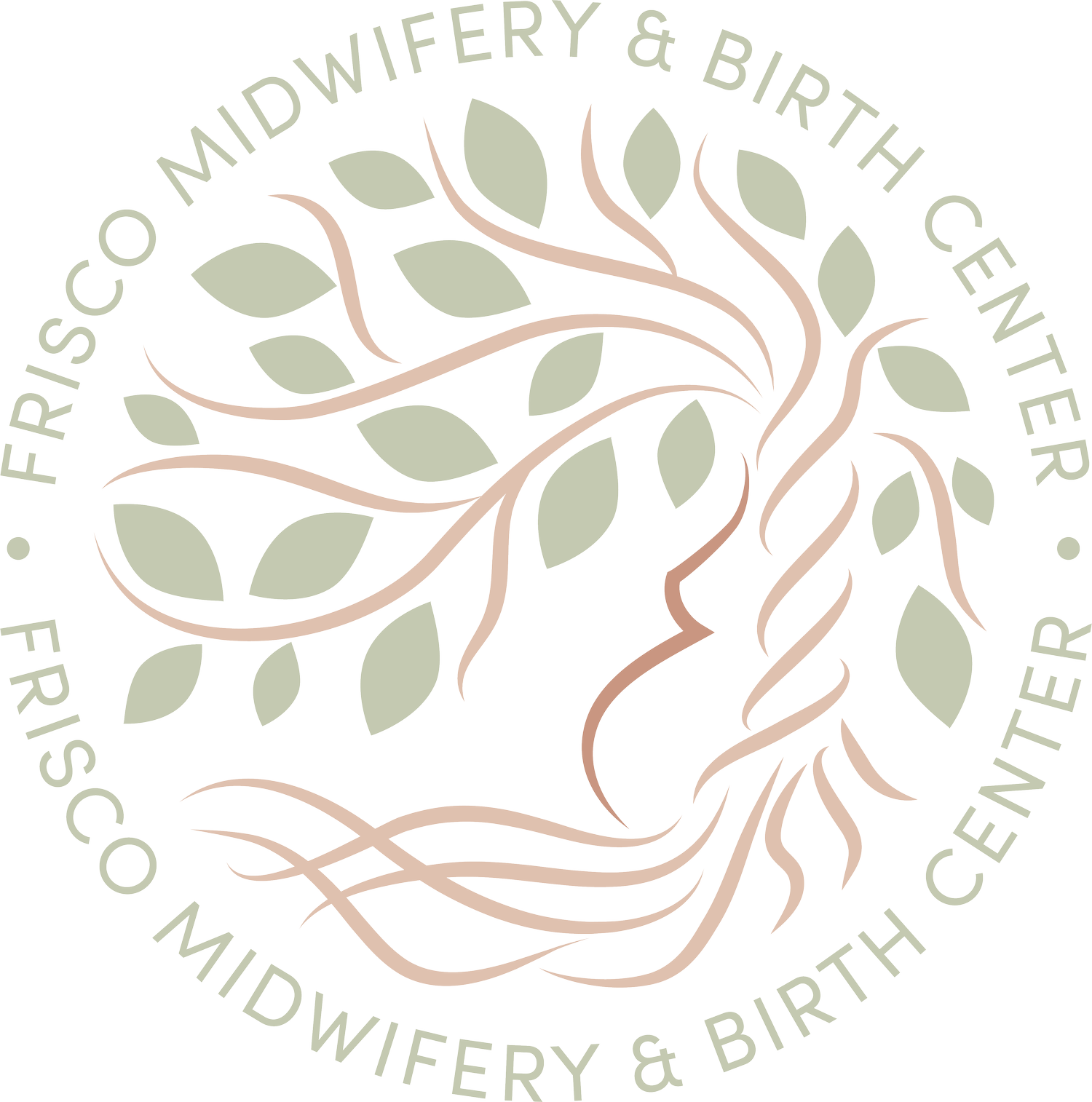Vaginal Birth After Cesarean
In the last 20 years, the number of women in the US who birthed their babies by cesarean has increased from 1-out-of-5 to 1-out-of-3. There are some hospitals in North Texas with a rate closer to 1-out-of-2 babies born surgically. This steep increase in the use of surgery for birth is a reaction to complex social, cultural and economic pressures.
Unfortunately, many physicians are unwilling or reluctant to attend a vaginal birth after cesarean (VBAC). So, women who had a cesarean birth who don’t want a repeat cesarean without a medical reason often turn to midwifery care for their births. Frisco Midwifery has created this page to help you understand the benefits, risks and special considerations of Vaginal Birth after Cesarean (VBAC). Please read the information. Research your options. Ask questions.
Is Vaginal Birth After Cesarean Safe?
There are increased risks to birth when there is a history of surgery. The scar tissue can affect the function of the uterus, may contribute to complications with the placenta, and may have increased risks to the baby in labor. As we navigate the choices you have in birth, we need to make sure you are a good candidate for a vaginal birth after cesarean, and also for a birth in a community setting. Statistically, 75% of women who have had a previous cesarean are good candidates for out of hospital birth, and will birth vaginally. The factors that will make you a good candidate include your overall health, fitness, diet, nutrition, activity level, and, reasons for your cesarean, and the qualities of the scar/incision as well. Across the weeks and months leading up to your birth, we will focus on healthy choices to support your body and help you have a safe vaginal birth after cesarean. We will depend on your commitment to achieving a safe, healthy birth.
What makes the “ideal” VBAC candidate?
Full-term (completed 37-weeks) before going into labor.
Just one baby (not twins or triplets)
Baby in a head-down position (not breech)
Healthy mom:
Healthy metabolism (not diabetic)
Healthy blood pressure (not pre-eclampsia)
Body Mass Index in the “normal range”
Healthy baby (growing well)
Excellent labor support from a highly skilled doula.
How do you assess my risks?
We will refer you for a detailed ultrasound at 20-weeks with our consulting physician who will verify that the baby is healthy.
The ultrasound will also identify where the placenta is in relationship to the scar on your uterus.
We will need to have a copy of your surgical records to determine what kind of incision you have on your uterus.
We will draw labs at the first appointment, 28 weeks, and 36-weeks with your consent.
Please remember that we cannot guarantee a vaginal birth. Please do your research. Understand the risks and consequences of the risks that you are assuming when you choose to pursue a Vaginal Birth After Cesarean (VBAC)
What can I do to minimize risks?
Eat a whole-food diet: lots of vegetables, proteins and healthy fats. Limited processed foods, sugars, and white carbohydrates
Walk 30-minutes per day
Take yoga or exercise throughout pregnancy.
Have regular chiropractic care with a chiropractor who is skilled at helping keep your body balanced· Check our list of chiropractors who support community based birth HERE.
Establish a regular practice of relaxation / meditation.
What are the benefits and risks to me of a VBAC?
Risks:
If the scar weakens, contractions can cause the original incision to re-open. This is a rare but serious or catastrophic complication. If you have sudden onset of intense pain or unusual bleeding at any point in pregnancy or labor, immediately let your midwife know.
Because of the severe consequences of a uterine rupture, please give very serious consideration to whether you want to birth in the hospital instead.
Benefits:
Vaginal birth is safer for the mother than a repeat surgery.
There is a lower risk of hemorrhage and infection.
Postpartum recovery is shorter.
It may also help women avoid the possible future risks related to having multiple cesareans, such as hysterectomy, bowel and bladder injury, transfusion, infection, and abnormal placenta conditions (placenta previa and placenta accreta).[i]
Greater likelihood of being able to have future children.
Increased percentage of breastfeeding success.
Seeding the microbiome through exposure to normal vaginal secretions.
How will my midwife recognize concerns during labor?
As with all other laboring women we will monitor you throughout labor. We will check your blood pressure, pulse, and temperature, and also monitor your baby’s heart rate periodically through labor. We also depend on the mother to communicate clearly with us about any signs and symptoms of which we should be aware. If we have any concerns at any time throughout labor or birth, we will initiate our emergency plan that we discuss and create during your 36-week prenatal appointment.
What can I do to help prepare for a successful VBAC?
Educate, educate, educate.
Discuss your diet with your midwife and consider a nutritionist if needed.
Eat a whole food, low carbohydrate diet with plenty of protein, natural fats, and a variety of fresh vegetables.
Meditation and/or prayer, relaxation techniques such as breathing exercises daily.
Spinning Babies “Three Sisters of Balance” and squats every day. Check out all the Spinning Babies resources HERE.
Regular exercise; including the walking daily for 30 minutes.
Regular chiropractic visits – at least as often as you see us. Check out our list of chiropractors who are supportive of community-based birth HERE
Take a childbirth class that includes skills practice for natural coping skills.
Hire a skilled doula to labor with you. We have some great doulas we love working with. You can find them in our Resources list HERE.
Sources:
The American Congress of obstetricians and gynecologists. (2010, August). New VBAC Guidelines: What they mean to you and your patients. ACOG Today, 54(4), 6–7. Retrieved from https://www.acog.org/-/media/ACOG-Today/acogToday0810.pdf?dmc=1&ts=20200120T1911286741
